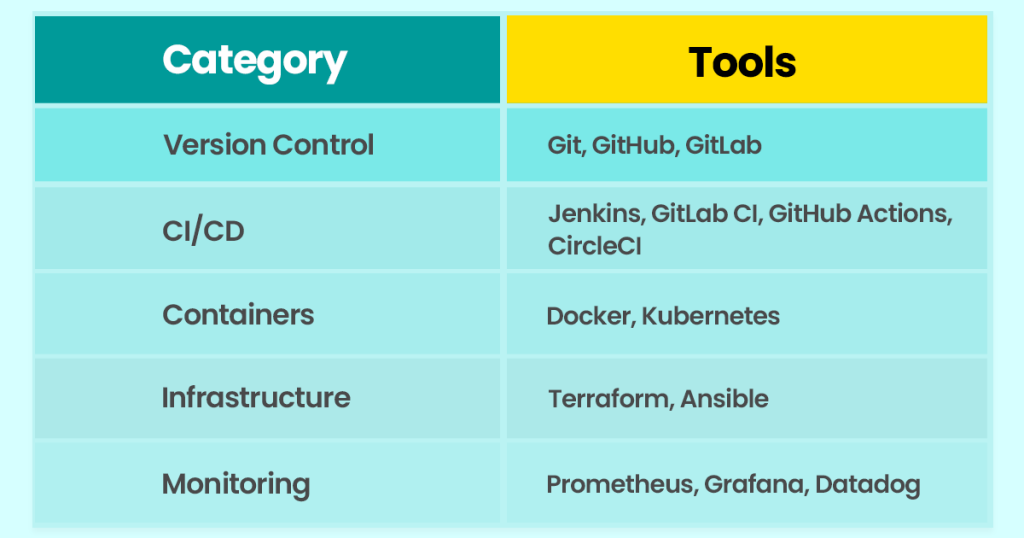
Our Blog Details
Home / Our Blog DetailsHey there, software folks! Are you struggling to keep up with the fast-paced demands of modern app development? But here’s a way. And that is agile software development. Maybe you’ve heard about Agile and DevOps but aren’t sure how they fit together. Well, you’re in the right place! This blog dives into why DevOps is the secret sauce that makes Agile software development shine. We’ll break it down in a simple, conversational way, so you can see how these two powerhouses team up to deliver awesome software faster and better.
Let’s get started!
What Is DevOps?
DevOps stands for Development + Operations.
It’s a set of practices, tools, and a culture that helps development and operations teams work together. The goal is to automate processes, improve collaboration, and speed up software delivery without sacrificing quality.
DevOps is all about:
- Continuous Integration (CI): Automatically testing and merging code.
- Continuous Delivery (CD): Automating deployments to production.
- Monitoring and Feedback: Watching how the software performs in real-time.
- Collaboration: No more silos between developers, testers, and operations.
What Is Agile Software Development?
Now, let’s quickly understand what Agile is. Agile is a way of building software that focuses on:
- Customer feedback
- Continuous improvement
- Small, frequent updates
- Team collaboration
Instead of working on a big project for months and releasing everything at once, Agile teams work in short cycles (called sprints) to build, test, and release features quickly. This way, they can adjust and improve based on user needs — which is great!
But here’s the catch: while Agile makes development faster, it doesn’t always fix the issues with deployment, testing, and operations. That’s where teams hit a wall.
Why DevOps Is Important for Agile
You might be thinking — if Agile is already about speed and flexibility, why do we need DevOps?
Here’s why: Agile focuses mainly on development, while DevOps connects the entire lifecycle, from planning to deploying to monitoring.
Let’s look at how DevOps fits perfectly into Agile:
1. Speeds Up Delivery:
DevOps uses automation tools to build, test, and release software quickly. This fits well with Agile, which focuses on releasing updates in small, fast cycles.
2. Better Teamwork:
DevOps helps developers and operations teams work closely together. This breaks down communication gaps and builds a stronger team.
3. Improves Software Quality:
By testing early and often with automated tools, DevOps helps find and fix problems faster. This leads to better, more reliable software.
4. Saves Time:
Automation takes care of boring, repetitive tasks. This lets Agile teams spend more time on creative development work.
5. Faster Feedback:
With DevOps, teams get feedback quickly. This helps them make changes faster and keep up with shifting needs.
6. Lowers Risk:
DevOps makes testing and deployment more reliable. This reduces mistakes during releases and keeps software more stable.
In short, DevOps strengthens Agile by making the whole process faster, smoother, and more reliable. It helps teams deliver better software, more often.
Want to stay ahead of the curve in 2025? Don’t miss our insights on the Top Software Development Trends to Know—it’s a great way to understand what’s shaping the future of tech.
How to Build a DevOps-Based Agile Transformation Plan
Step 1: Understand Where You Are Now
- Ask your team how often they release updates, how many bugs they face, and which tasks take too much time.
- Find the main problems between development and operations teams.
Step 2: Start Small with One Team
- Pick one or two teams to try DevOps tools like CI/CD (Continuous Integration/Delivery) and Infrastructure as Code (IaC).
- Build a basic automated pipeline, show quick results, and collect feedback from the team.
Step 3: Spread the Practice to Other Teams
- Provide proper training and easy-to-follow guides.
- Create a space where teams can share tools, ideas, and tips with each other.
Step 4: Keep Improving Step by Step
- After each sprint, review what went well and what didn’t.
- Improve your pipelines, automate more testing, and make small process tweaks.
Taking it slow helps teams adjust to the new culture without feeling overwhelmed. Small wins lead to big changes over time.
Want to keep your site running flawlessly and your UI/UX intact? See how regular maintenance can prevent costly website outages here.
Popular DevOps Tools That Support Agile Teams
You don’t need to manually do everything. There are tons of great DevOps tools that make life easier.
Here are some you’ll likely use:

These tools help automate, monitor, and manage the entire software lifecycle — something Agile teams can really benefit from.
You can also look up to some UX/UI tools in our guide to the Best Tools for UI/UX Designers to discover top-rated resources that make designing intuitive and efficient.”
Challenges in Implementing DevOps in Agile Teams
Of course, it’s not all sunshine and rainbows. Implementing DevOps in Agile projects can come with a few bumps.
Here’s what you might face:
- Cultural Resistance: People don’t always like change. Devs and ops teams might struggle to shift mindsets from “this is your job” to “we’re in this together.”
- Tool Overload: So many tools, so little time! Integrating them properly and training your team can be tough at first.
- Security Concerns: With fast deployments, security risks can increase if not handled properly. (This is where DevSecOps comes in.)
- Skill Gaps: DevOps requires some new skills — especially around automation, cloud, and scripting.
But here’s the good news: with the right training, mindset, and leadership, you can overcome all of these.
Best Practices to Successfully Merge DevOps with Agile
If you’re ready to combine Agile and DevOps, here’s how to do it right:
- Promote a DevOps Culture: Encourage shared responsibility across teams. Everyone should care about the code, the product, and the customer.
- Automate Wherever You Can: Automation is your best friend. Start with CI/CD, testing, and deployments.
- Start Small and Scale: Don’t try to change everything overnight. Pick one project or one team to begin with, and grow from there.
- Focus on Continuous Feedback: Use tools to monitor performance, errors, and user behavior. Feedback helps you improve faster.
- Measure What Matters: Track metrics like deployment frequency, lead time for changes, mean time to recovery (MTTR), & change failure rate.
Want to keep your website running smoothly and avoid unexpected downtime? Don’t miss our Essential Website Maintenance Tips for Success — packed with practical advice to keep your site optimized and secure.
Why Choose ITclan BD’s DevOps Services for Your Agile Team?
If you’re ready to take your Agile development to the next level, ITclan BD is here to help. We don’t just talk DevOps — we live it. Our expert team works hand-in-hand with startups, enterprises, and growing software teams to implement smart, scalable DevOps strategies that actually work.
We offer tailored DevOps solutions that:
- Automate your CI/CD pipeline
- Speed up deployments
- Improve software quality
- Enhance team collaboration
Whether you’re just starting with Agile or scaling up a mature product, ITclan BD’s DevOps services can help you deliver faster, smarter, and stronger. Ready to boost your Agile team with DevOps? Contact us now and let’s build something great — together.
Final Thoughts: DevOps Is Indispensable to Agile Success
Agile helps you build fast. And DevOps helps you deliver fast.
Without DevOps, Agile teams often hit bottlenecks during testing, deployment, and operations. DevOps breaks down those walls, automates the boring stuff, and keeps everything flowing. Together, Agile + DevOps means faster innovation, higher quality software, and happier customers, and that’s what every tech team dreams of.
Frequently Asked Questions
DevOps in Agile refers to combining development and operations practices to support the Agile approach. It automates testing, integration, and deployment processes, helping Agile teams release software faster and with fewer errors.
DevOps improves Agile by automating workflows, enabling continuous integration and delivery (CI/CD), and promoting collaboration between teams. This results in quicker feedback loops, faster releases, and higher product quality.
DevOps is not a part of Agile, but it complements Agile by supporting the rapid development cycles with streamlined deployment and operations. Together, they ensure both speed and stability in software delivery.
Agile is best for software development because it helps teams work faster, adapt to changes easily, and deliver better products. Instead of waiting months for a big release, Agile focuses on small, frequent updates. This means bugs are caught earlier, user feedback is added quickly, and teams can respond to changing requirements without starting over.
Agile is often preferred over Waterfall because it’s more flexible and faster. In Waterfall, you plan everything upfront and follow a strict step-by-step process which makes it hard to change anything once development starts. If requirements shift (which they often do), going back is costly and time-consuming. Agile, on the other hand, allows you to work in small chunks, test often, and adjust quickly. This means you can respond to user feedback, fix problems early, and deliver a better product faster. Agile is more team-friendly, customer-focused, and ideal for today’s fast-moving software projects.
Recent Blog Post
Quality Is Our Strength

How DevOps Automation Is Revolutionizing the Software Develo...
Software development has changed a lot in the past decade. Gone are the days when teams waited weeks or even months to release updates. Today, users expect fast updates, bug fixes, and new ...

Why Proactive Website Maintenance Protects Against Security ...
Your website is like your digital shop, open 24/7 for the world. But just like you wouldn’t leave your physical shop unlocked overnight, you also shouldn’t leave your website unprotecte...

Web Development Trends That Will Dominate the Next Decade...
The internet never stands still—and neither does web development. If you’ve been following the tech world, you already know that websites today look and behave nothing like the ones we ...

